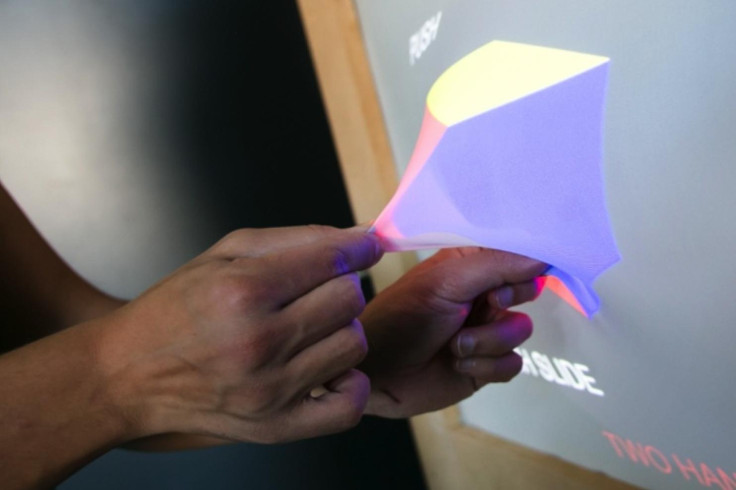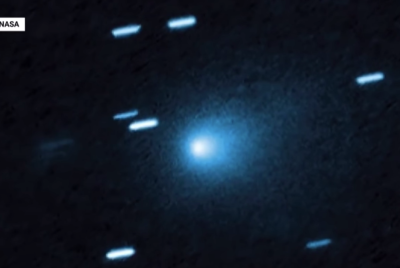Ghost technology projects objects out of TV screens using ultrasound levitation

A group of researchers funded by the European Union have developed a new type of shape-changing display that enables users to pull and manipulate flatscreen displays using their fingers.
The shape-changing display breakthrough is part of the Generic, Highly-Organic Shape-Changing Interfaces (GHOST) project and is the product of three years of research by the University of Copenhagen, the University of Bristol, Lancaster University and Eindhoven University of Technology.
As glass cannot be bent as it will break, the researchers instead made a flatscreen display out of Lycra, which can be deformed at will. When a finger presses in on the display, a camera captures 3D depth data of the position and pressure of the finger on the screen.
The researchers have developed computer algorithms that are able to detect and understand the depth information from the screens when a hand pulls at the display, as opposed to a glass screen display like an iPad, which has technology that only detects the limited area of a fingertip pressing on the glass in 2D.
"It's not only about deforming the shape of the screen, but also the digital object you want to manipulate, maybe even in mid-air," said GHOST coordinator Professor Kasper Hornbæk, who researches human-computer interaction at the University of Copenhagen.
"Through ultrasound levitation technology, for example, we can project the display out of the flat screen. And thanks to deformable screens we can plunge our fingers into it."
The myriad uses of ultrasound haptics
The researchers foresee their technology being utilised by a huge range of industries, such as in healthcare, where surgeons could swipe at and interact with the screen in order to turn and adjust the 3D model of a brain generated by a computer from a CT scan.
"This will have all sorts of implications for the future, from everyday interaction with mobile phones to learning with computers and design work," said Hornbæk.
"Displays which change shape as you are using them are probably only five years off now. If you want your smartphone to project the landscape of a terrain 20cm or 30cm out of the display, that's a little further off - but we're working on it!"
The research programme, which is due to finish at the end of this year, received €1.93m in funding from the European Commission's Community Research and Development Information Service (CORDIS).
The GHOST project has generated several different prototypes for shape-changing displays. One of the prototypes is an invisible 3D hologram that can be felt and seen in mid-air that IBTimes UK reported on in December.
Developed by computer scientists at the University of Bristol, the solution works by pulsing high-frequency ultrasound waves from tiny speakers to exert pressure on a person's hand.
The technology is known as UltraHaptics and a startup by the same name has been spun off to develop the technology for commercial use.
© Copyright IBTimes 2025. All rights reserved.





















